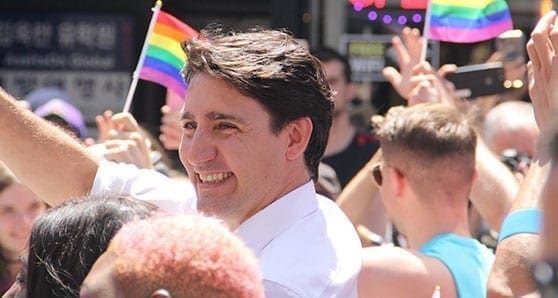 Justin Trudeau caused a stir when photos and videos were revealed of him darkening his face to pretend to be characters of other ethnicities. But there are far broader issues to consider in this scandal.
Justin Trudeau caused a stir when photos and videos were revealed of him darkening his face to pretend to be characters of other ethnicities. But there are far broader issues to consider in this scandal.
Green Party leader Elizabeth May stated, “I am deeply shocked by the racism shown in the photograph (from 2001) of Justin Trudeau. He must apologize for the harm done and commit to learning and appreciating the requirement to model social justice leadership at all levels of government.”
This is precisely what the prime minister has done. There has been no denial or justification of his action. He knows it was wrong and he has asked the Canadian people for forgiveness.
When teaching about social justice, I believe it’s very important to ask why crimes against humanity happened. If we understand the way people thought at the time, we can objectively see how such grave mistakes were made. If we understand them, we are less likely to repeat them.
Seeing the world as historians, we can put away our 21st-century judgments and find the truth behind events. Most importantly, we’re able to come back to our age and ask, “How will history judge us? Are we doing all that we can right now to build a more just world?”
Clearly, the black- and brown-face tradition in theatre has a horrible history. It was borne out of a social justification of racist stereotypes. Even if Trudeau’s intentions were benign in 2001, deeper reflection would have led to a more appropriate costume for an Arabian Nights gala.
The photos and videos of Trudeau in his high school and university years, however, may be a different matter. How many of us have pictures from earlier in our lives that we’re embarrassed about, pictures that people today could find scandalous? From grass skirts to princess outfits, I know that I’m not without fault.
I often point out to my students that they’re much kinder to each other than when I was in high school in the 1970s. Our level of tolerance for bullying, sexism and racism would shock young people today. Would any of us be immune to criticism if our words and actions were now made public? Perhaps the best that any of us could do would be to say, like Trudeau has done, “I’m going to continue … to fight intolerance and discrimination even though obviously I made a mistake in the past.”
The photographs won’t influence whether I vote for Trudeau’s Liberal candidate in my riding. I have four years of government actions on which to base my decision.
As an Arab-Canadian, I find his government’s policies toward the people of Palestine and Yemen far more offensive than his silly Aladdin outfit.
I also see Trudeau’s lack of eagerness to implement the 94 calls to action of the Truth and Reconciliation Commission, released shortly after he took office.
I can also evaluate how the Liberal government has dealt with scandal and corporate welfare, as well as their environmental record and failure to implement electoral reform.
It’s important to see this event for what it is: an attempt to discredit a politician. Why were these pictures and videos leaked to the media during an election? Do the opposition parties have so little confidence in the legitimacy of their platforms that they feel the need to publicly discredit the leader of the current government?
Their timing, in my mind, is no less scandalous than the images of Trudeau themselves.
Canadians have a very important choice to make on Oct. 21. It will determine the course of our country and our place in the world. May we each embrace this responsibility with a clear and informed conscience.
Gerry Chidiac is an award-winning high school teacher specializing in languages, genocide studies and work with at-risk students.
The views, opinions and positions expressed by columnists and contributors are the author’s alone. They do not inherently or expressly reflect the views, opinions and/or positions of our publication.


